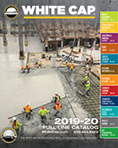Structural Engineers Lead LA’s Soft Story Retrofit Initiative
Structural Engineers Step Up
We used to think of structural engineers as behind-the-scenes workers. Their sturdy foundation and framework designs for new buildings were mostly hidden by architectural design. But those days are over. In many communities within California quake zones, structural engineers now lead efforts to quickly make buildings safer.
So, why the change? City officials in LA are now requiring structural retrofits to prepare older neighborhoods for the next big one. That puts structural engineers in the forefront of the massive task to save the lives and livelihoods of soft-story building dwellers. Fortunately, there’s no shortage of resources from software to prefabricated seismic retrofit products that are quick to install, cost-effective, and certifiably durable.
Why Is There A Rush To Retrofit?
Older neighborhoods in LA can’t wait. As Mayor Eric Gareitti said in 2015, “The time of action is now as it’s only a matter of time to when the next earthquake happens, not if it will happen.” Gareitti emphasized the need for a fast-tracked, city-wide resiliency upgrade when he made the Resilience by Design report public. In the report, experts identified challenges facing the community in protecting vital assets at greatest risk during a major quake. The assets included water resources, telecommunications networks, non-ductile concrete structures and soft-story buildings.
To download the report click here:
https://cawaterlibrary.net/wp-content/uploads/2017/12/Resilience-by-Design-1.pdf
Scientists agree with the mayor. Seismic experts are warning that Southern California will suffer a major quake soon. In 2016, citizens in Los Angeles were reminded that a major seismic event could be right around the corner. Thomas Jordan, Director of the Southern California Earthquake Center, stated that the San Andreas Fault appears to be in a critical state and could generate a large earthquake any day.
To read the UPI report on the event click here
Engineers do not need to imagine the unimaginable. They have to imagine the manageable.
Resilience by Design is just one of many Southern California initiatives to update building codes. The Structural Engineers Association of Southern California (SEAOSC) launched a study in 2016 looking at which jurisdictions in Southern California have started the process of updating building codes. According to SEAOSC President Jeff Ellis, S.E., “To develop an effective strategy to improve the safety and resilience of our communities, it is critical to benchmark building performance policies currently in place. For southern California, this benchmarking includes recognizing which building types are most vulnerable to collapse in earthquakes, and understanding whether or not there are programs in place to decrease risk and improve recovery time.”
How Big Is The Soft-Story Challenge?
Let’s put it this way – structural engineers in Southern California will be very, very busy. John van de Lindt, the George T. Abell Professor in Infrastructure at the Colorado State College of Engineering in Fort Collins, believes LA’s older neighborhoods are just the tip of the iceberg. He estimates there are many thousands of multi-family buildings across California that will need retrofits to keep inhabitants safe.
Even LA building officials believe Van de Lindt’s estimate is low. They’ve identified almost 13,000 buildings inside the city limits that might require a soft-story retrofit. That’s big. It’s like repairing every building in Glendora, CA. (50,000 people). And these buildings are located all over the city. Since this task is so large, structural engineers will need to specify high-quality products that get the job done quickly. That’s why prefabricated frames might be an answer to their prayers.
Are There Cost-Effective Answers?
The lion’s share of LA’s soft-story structures were built decades ago – long before current building codes added seismic requirements. Structural engineers face a unique retrofit challenge with each structure. Unfortunately, with so much design and construction diversity in these buildings, there’s no easy way to tackle the retrofit task on a large scale.
Recently, the SEASC advised owners to authorize their engineer to provide more than one analysis for the seismic upgrade. The Soft-Story Ordinance lets them choose from among three different engineering approaches to demonstrate compliance. All three provide a soft-story retrofit design that solves building risk to damage and collapse in a big quake.
Even though the SEAOSC believes the three-program review may cost more prior to a project’s start, they feel it will potentially lower construction costs because of more efficient design. This approach can also give owners a repair choice that creates fewer hassles for inhabitants. In many instances, prefabricated structural frames can easily be included in each calculation.
The Los Angeles Department of Building Safety has provided an Information Bulletin (P/BC 2014-137) that provides design guidelines that would allow approval. http://www.ladbs.org/docs/default-source/publications/information-bulletins/building-code/ss-program—structural-design-guidelines.pdf?sfvrsn=18
How Much Damage Control Can Owners Afford?
Prefab products help structural engineers provide options for owners on another important decision. How much of an upgrade makes sense financially for their soft-story building? Current code requirements aren’t intended to prevent all quake damage, so owners need a structural engineer’s advice to decide how much damage they want the retrofit to prevent.
Fortunately, engineers have the flexibility to either meet or exceed minimal requirements with prefab moment frames. Some of these products reduce horizontal movement of the building in an earthquake to avoid catastrophic damage. But when the building’s value warrants it, a prefab product that provides even higher standards and damage prevention can be chosen. The added installation cost for a higher level of safety is often minimal. And the additional cost of upgrading to higher damage prevention is reasonable when compared to the cost of repairs or replacement because of quake damage.
Limiting An Owner’s Loss Of Business
The looming threat of a big quake is a powerful motivator. But many soft-story project timelines are driven more by financial constraints – like impending sales that require inspection compliance. Structural engineers can rely on prefab frames as a great way to limit disruption to the owner’s rental income during installation and following a big seismic event in several ways:
-
Manufacturers can quickly fabricate the frames at the factory and ship most products to the jobsite in less than 3-days after drawings are received. Many custom designs ship within a week.
-
Using prefab frames may eliminate some special inspection delays like the need for on-site weld inspection.
-
Shipping frame assemblies directly to the jobsite saves time and delivery costs.
-
Resident disruption is kept to a minimum. Prefab frames are 100% bolted in place during installation. That eliminates on site welding (a leading cause of jobsite fires in wood structures) and unhealthy fumes or gases that can require evacuation of the building.
Reducing Retrofit Design Risks
When structural engineers include prefabricated frames in their designs, they add assurance you don’t get with field-welded frame assemblies because manufacturers provide all documentation for quality assurance to the engineer. Off-site fabricated frames also eliminate the product liability concerns of custom made members.
Frames are made in a production environment with comprehensive quality-control measures and field-bolted connections eliminate questions about the quality of field welds. All specialty tension-controlled bolted connections are performed in the factory under third-party witnessed inspection and all field-bolted connections are snug-tight. Manufacturers can also provide documentation that the frames are code-listed under jurisdictions such as the ICC Evaluation Service, ANSI, and City of Los Angeles regulation RR25957.
Why Choose A One-Stop Supplier Source?
When addressing soft-story retrofits, structural engineers often find additional problems needing attention to make a building stronger. So it’s a good thing manufacturers of prefab frames also carry a variety of seismic strengthening devices. They can simplify the creation of installation drawings and the drafting of project specifications by incorporating a product’s design parameters and details. This one-stop-shop approach to design can even include specification of products for repairs that are needed before the retrofit can begin.
Prefab frame manufacturers typically carry anchor bolt assemblies – a key element of this systematic design. Structural engineers can specify the appropriate assembly based on site condition, knowing that the frame will be properly secured.
By sourcing products through a local distributor like White Cap, who handles prefabricated seismic retrofit products from key manufacturers, the engineer can be confident that the contractor will complete the installation as specified.
Frames Speed Up Post-Earthquake Reviews?
Structural engineers make it easier and faster to inspect and repair buildings after a seismic event by specifying prefab frames. Manufacturers can provide detailed drawings to use as a reference the project – and if the frame becomes deformed or damaged, manufacturers can quickly produce an exact replacement. Some manufacturers even include a sacrificial design element in the frame assembly that bears the brunt of seismic forces. That reduces the risk of collapse by isolating damage and results in a less labor-intensive and faster post-quake repair.
Want To Know More About Soft-Story Retrofits?
Simpson Strong-Tie. a leading manufacturer of seismic upgrade products, has developed several instructional courses for structural engineers looking to learn more about seismic upgrades, including retrofitting soft-story structures.
Here are a few of them:
Soft-Story Retrofit was created to familiarize structural engineers, architects, contractors and code officials with retrofit solutions for collapse-vulnerable multi-unit wood structures.
Understanding Moment Frames is intended primarily for structural engineers and designers wanting to understand and design moment frames. This course reviews the types and application of moment frames and walks viewers through a design solution for pre-fabricated moment frames.
Seismic Design for Wood-Framed Construction is intended primarily for structural engineers and architects interested in seismic design for wood framed construction. Topics included are 2012 IBC and ASCE 7-10 provisions, AF&PA 2008 SDWPS code changes affecting the creation and use of a design example for illustrative purposes.
These and other relevant courses can be found on the Simpson Strong-Tie Learning Center website:
Simpson Strong-Tie offers software that helps structural engineers with soft-story building retrofits. The Weak Story Tool aids in performing the analysis outlined in FEMA P-807 with a CAD interface to account for the locations and structural properties of the various lateral-load-resisting elements before and after retrofitting. This software for specifiers combines the convenience of designing a variety of retrofit solutions that include Strong Frame special moment frames with a simple method for cost evaluation.
Check out our intro article on Soft-Story Retrofit and seismic considerations that are of specific interest to contractors, structural engineers and building owners.



